On the 19th of October, the Construction Leadership Council officially launched Creating a productive environment for UK Construction to transform its productivity, identifying three areas where billions of pounds of savings could be made, or additional value generated for the UK economy. To watch the webinar, please click here.
The timing of the report’s release is crucial given the current economic and regulatory environment, as it addresses the need for industry to unify its messaging consistent way.
During the Webinar, the CLC set the report’s context and outlined the data analysis around the productivity opportunities and the associated cost. The CLC also provided a sub-sector breakdown across Infrastructure, Buildings & Places, Housing, and Domestic RMI, offering businesses greater granularity to the productivity opportunities. This is key, enabling them to collectively understand where they can make the most significant impact on productivity.
The CLC also revealed its next steps for converting the findings of the report into action:
CLC Engagement: How the CLC will take the recommendations forward within its own workstreams and how they will collaborate with wider industry.
Ministerial and Political Engagement: Updates on the CLC’s recent discussions with both political Party Conferences.
Measurement: Expanding on the metrics for measurement presented in the paper for each of the focus areas outlining the productivity opportunity at a sector level and developing a standard for how we measure productivity at a business and project level.
The Webinar also outlined what the paper means in practice in relation to our sub-sector groups. The CLC Housing Industry Sponsor, Mike Woolliscroft, provided further insight into the housing sector as it stands today, noting concerns around economic conditions, regulatory change and the planning regime. In relation to the paper, the group is focussing on progressing recommendations around SME engagement through knowledge sharing and ensuring the planning system does not deter investment.
FAQ’s
The recommendations focus on policy, government project and industry, but can any be applied at a business level?
While the report’s recommendations are presented at policy, government project and industry level, the data analysis provides a good indication on the productivity improvement opportunities at a sub-sector level that provide better guidance to businesses. We are also seeking to develop measurements at a project and business level as a follow up from the paper.
How did you gather the data and conduct your analysis?
The data for this report was gathered through various resources, primarily the Office of National Statistics and existing industry research from the likes of the National Infrastructure Commission, Institute of Civil Engineers, Get It Right Initiative as well as employment data from the Construction Industry Training Board. The analysis was verified by economists and the findings were then synthesised to provide a comprehensive view of the productivity opportunities and the cost associated.
How does the Transforming Construction Challenge fit into this paper?
The report references the Construction Sector Deal where the Transforming Construction Challenge is part of this. In addition, the report references the Construction Innovation Hub as part of the Transforming Construction Challenge, more specifically the work from the Value of Platforms Report.
What professional bodies are you hoping to engage with on the productivity standard?
The CLC is seeking to engage with a range of professional bodies to develop a standard for productivity measurement. Collaboration with these bodies will be essential to drive the adoption of productivity practices and measurement. There will also be a consultation to gather views from across industry.
Where does value fit into productivity?
Value is a critical aspect of productivity within this paper. The paper defines productivity as efficient use of resources and effectiveness of outputs. Enhancing value means optimising resources to maximise quality and benefits, by increasing productivity, the sector can generate more value from projects, delivering better results in terms of cost effectiveness, overall quality and other types of value like social and environmental.





